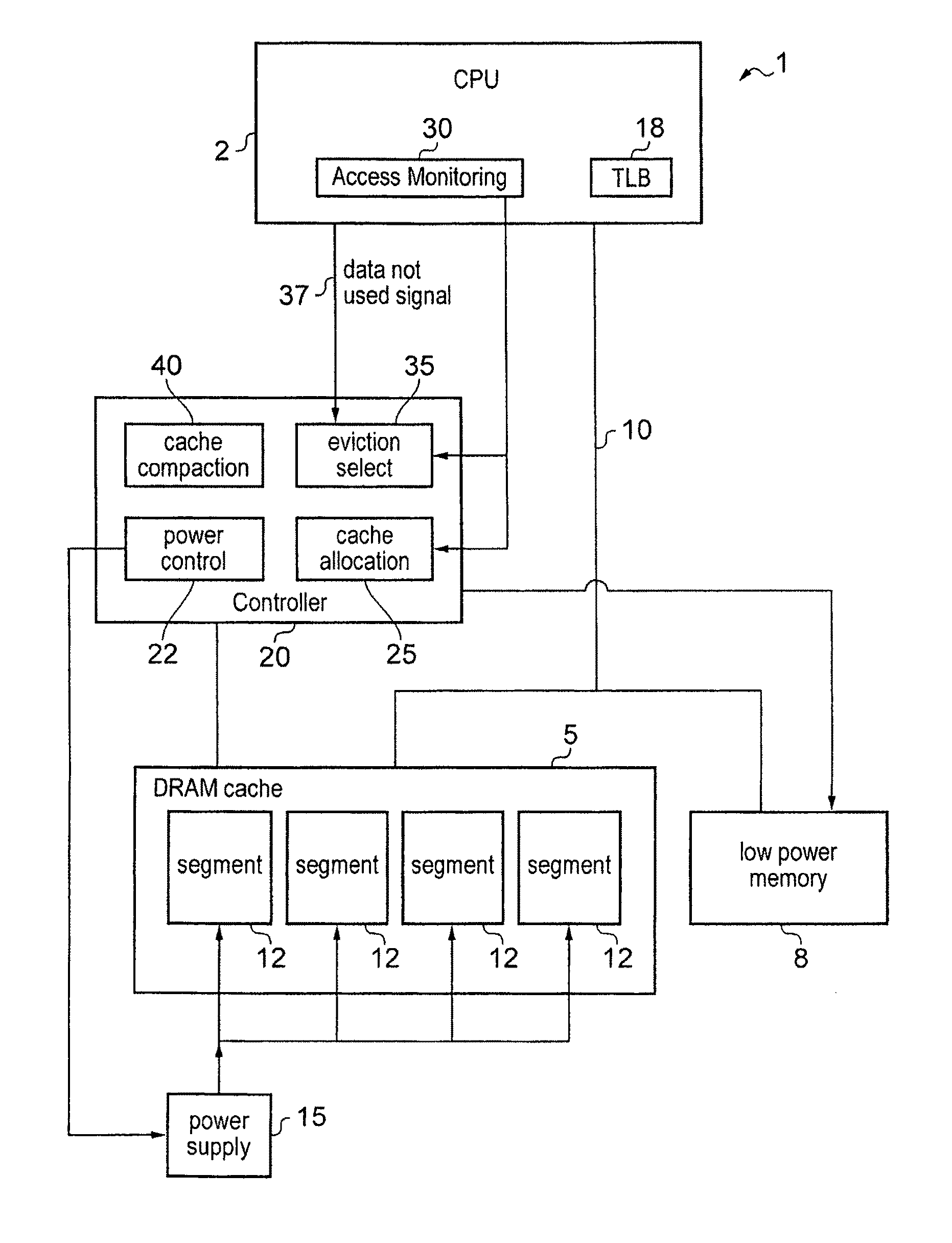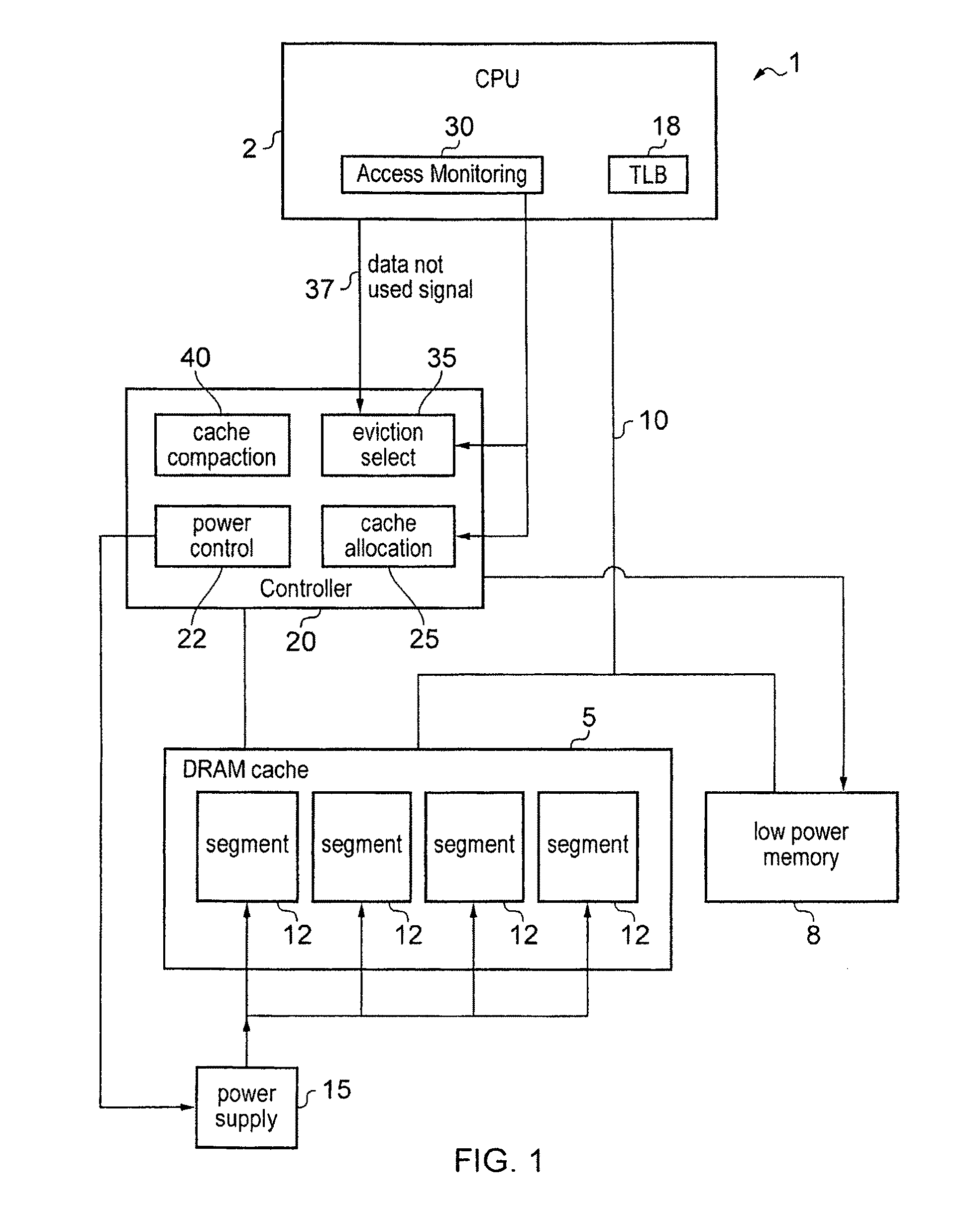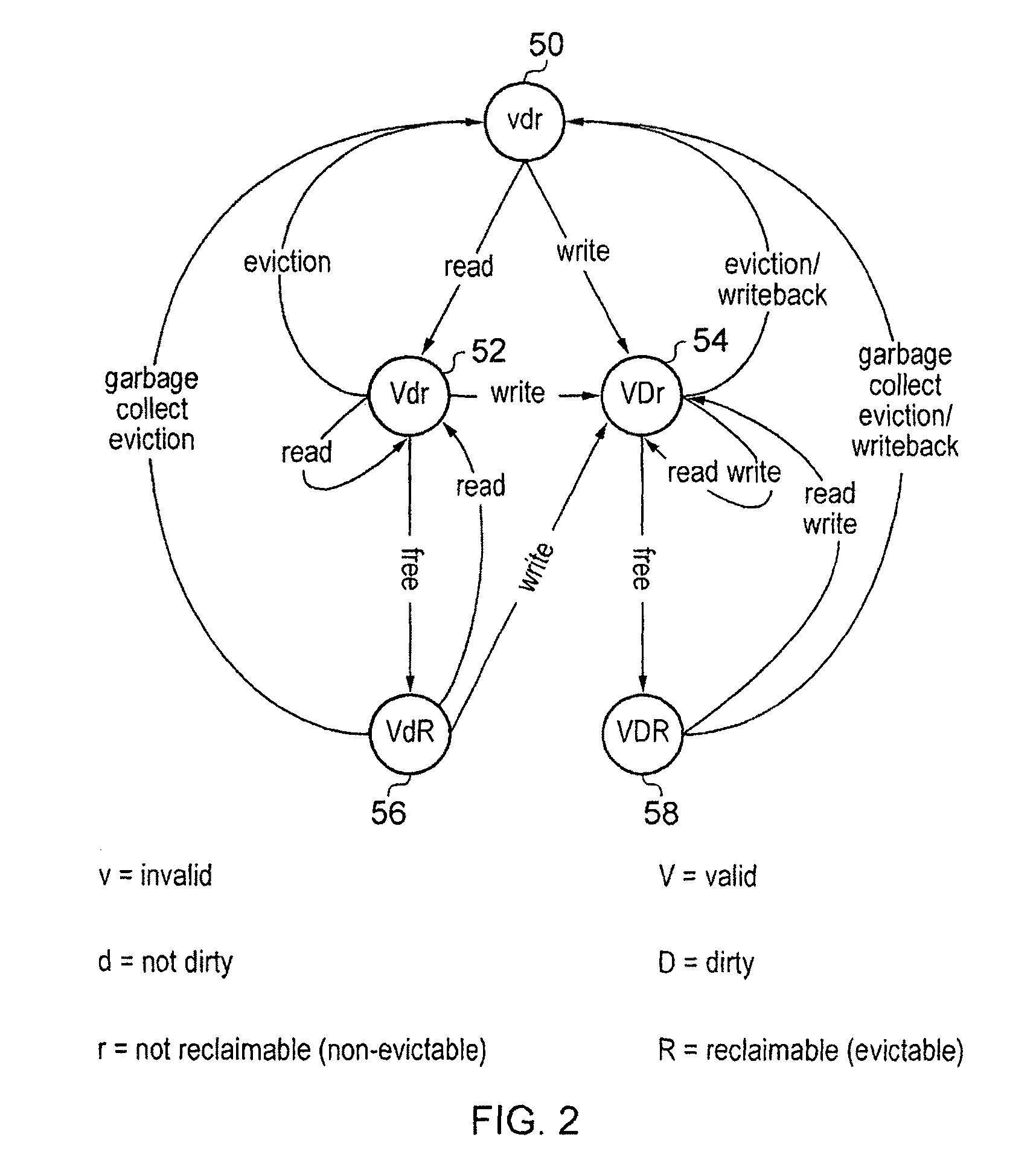Cache memory with power saving state
a technology of cache memory and power saving state, applied in the direction of instruments, liquid/fluent solid measurement, sustainable buildings, etc., can solve the problems of memory power consumption, access latency is several orders of magnitude greater, and memory power consumption can be an important issue, so as to increase cache capacity, avoid thrashing, and cache memory is easily scalable
- Summary
- Abstract
- Description
- Claims
- Application Information
AI Technical Summary
Benefits of technology
Problems solved by technology
Method used
Image
Examples
Embodiment Construction
[0098]FIG. 1 schematically illustrates a data processing apparatus 1 according to one example embodiment of the present technique. It will be appreciated that, as well as the elements illustrated in FIG. 1, the data processing apparatus 1 could comprise further parts that have not been illustrated for clarity.
[0099]The apparatus 1 comprises a processor 2 coupled to a DRAM cache 5 and a memory 8 via a system bus 10. The cache 5 is partitioned into cache segments 12, each cache segment comprising cache locations for storing cached versions of data from the main memory 8. The cache 5 is powered by a power supply 15 which has fine-grained (e.g. individual) control over the power supplied to each cache segment 12.
[0100]The main memory 8 is a low power memory having lower static power consumption per amount of stored data than the DRAM cache 5. The memory 8 may include flash memory, magnetic random access memory (MRAM), phase change random access memory (PRAM) and / or low-power dynamic ran...
PUM
 Login to View More
Login to View More Abstract
Description
Claims
Application Information
 Login to View More
Login to View More - R&D
- Intellectual Property
- Life Sciences
- Materials
- Tech Scout
- Unparalleled Data Quality
- Higher Quality Content
- 60% Fewer Hallucinations
Browse by: Latest US Patents, China's latest patents, Technical Efficacy Thesaurus, Application Domain, Technology Topic, Popular Technical Reports.
© 2025 PatSnap. All rights reserved.Legal|Privacy policy|Modern Slavery Act Transparency Statement|Sitemap|About US| Contact US: help@patsnap.com



